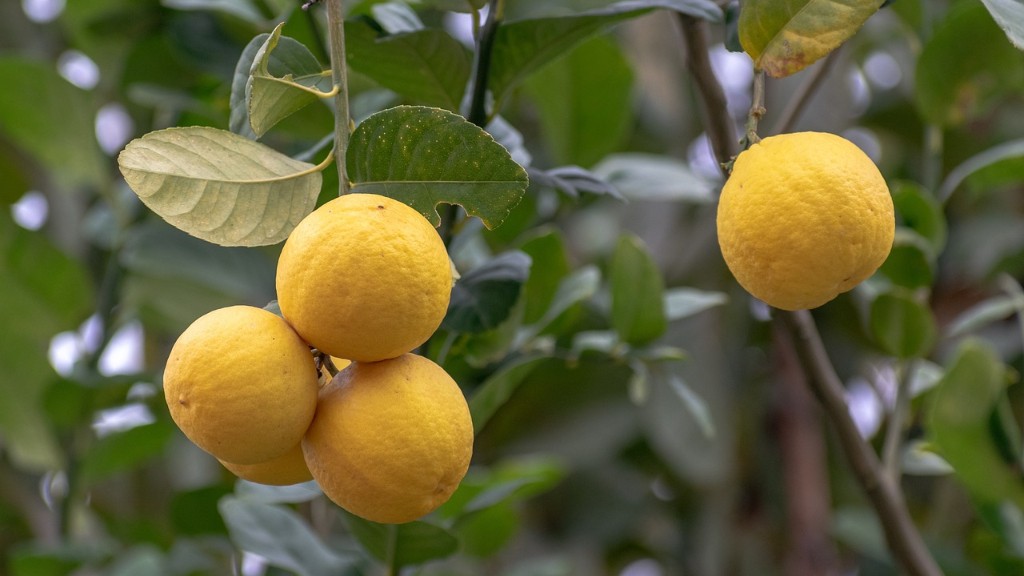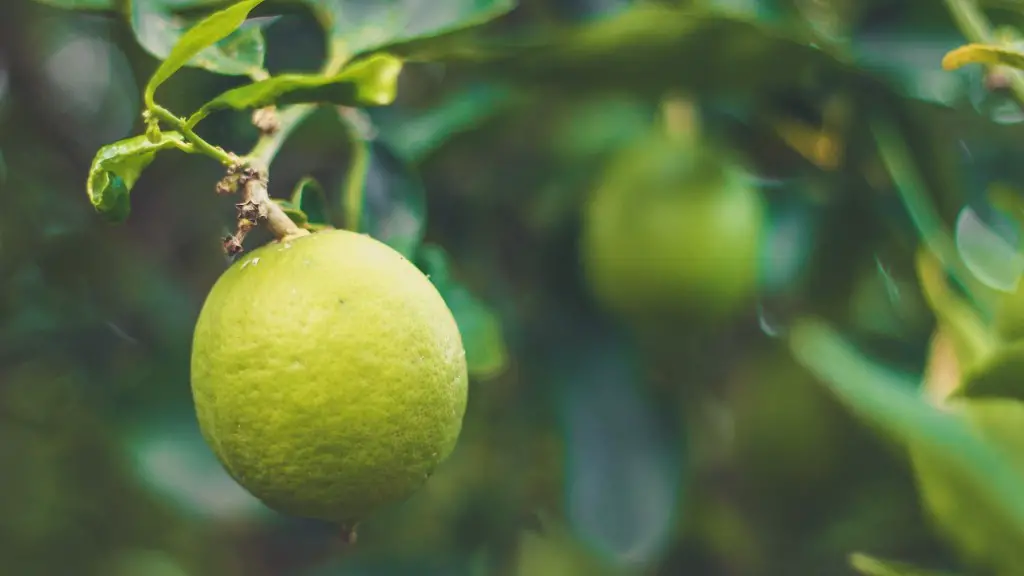The important thing to consider when trying to find the best fertilizer for lemon tree is the type of soil it is growing in. Sandy or loam soils generally are better suited to acid-loving plants like lemon trees, whereas clay soils need to be amended with organic matter or other types of soil amendment to make them suitable. Compost, manure and fish emulsion are all great organic options you can use to amend your soil. Organic fertilizer, such as bone meal and other plant-based products, are also a beneficial supplement to soil around your lemon trees. Additionally, adding zinc, copper, manganese and other trace minerals to the soil can help the lemon tree’s growth and health.
When to Fertilize Lemon Trees
When it comes to fertilizing your lemon tree, it is important to know when is the best time and how often to do it. Generally, you should apply fertilizer every few weeks during the grow season (spring and summer), when the tree is actively growing. This is done to replenish nutrients it would have taken from the soil. Nature’s Source and Neptune’s Harvest are two examples of popular fertilizers you can use during those times. When the tree enters dormancy (winter), the tree needs much less fertilizer, and you should only fertilize it once per season, or not at all. If a lemon tree has received too much fertilizer it would cause an imbalance of the local soil’s pH, slowing or even stopping the growth of the tree.
Choosing a Fertilizer
Organic fertilizers, like Bone meal and fish emulsions, are the best option to feed your lemon tree during the growing season as they are slowly released into the soil and provide your tree with nutrition over a longer period of time – up to eight weeks. Nature’s Source and Neptune’s Harvest are two examples of good organic fertilizers for lemon tree. Synthetic nitrogenous fertilizers are not generally recommended for trees, as their effects are often not as long lasting and can have higher levels of pollutants. It is important to consider these factors when selecting fertilizer for your lemon tree.
How to Fertilize Lemon Trees
Although the exact amount of fertilizer may depend on the type of soil and the needs of the tree, generally it is recommended to use 1-2 cups of fertilizer per lemon tree every 2-4 weeks during the growing season. The fertilizer should be spread evenly around the trunk of the tree, but not directly onto the foliage. It is important to water the fertilizer in to let it penetrate deeper into the soil, and it is also a good opportunity to observe how well the tree is absorbing the nutrients. Avoid overwatering as it can cause fungal growths and other disease.
Not Enough Fertilizer?
If your lemon tree is not growing as it should, one of the possible problems could be a lack of essential nutrients. It is important to regularly monitor the acidity and pH levels of the soil and provide necessary amendments. To correct soil acidity, you could add a product such as Aluminum Sulfate or Iron Chelate. Additionally, applying an organic fertilizer like Nature’s Source or Neptune’s Harvest can help provide a nutrient boost and replenish the soil’s mineral supply.
Nutrient Deficiency Symptoms
Lemon trees that are short on essential nutrients can display symptoms such as yellowing of the foliage, thin foliage, lack of new growth, and poor fruit production. If your lemon tree is displaying any of these symptoms, it is important to diagnose and correct the issue as soon as possible. Applying an organic fertilizer like Nature’s Source or Neptune’s Harvest can be a great solution and help the tree to get back on track.
Organic vs. Synthetic Fertilizers
Organic fertilizers are usually a preferable option when looking for the best fertilizer for a lemon tree. Organic fertilizers are derived from plants, animals or other natural sources, and provide numerous benefits to plants such as a longer lasting release, lower risk of nutrient imbalance, and providing trace minerals. Synthetic fertilizers can provide a quicker but more short-term release, and they are generally not as beneficial to the soil and unlikely to fix nutrient deficiencies. Therefore, organic fertilizers should be the mainstay when it comes to feeding your lemon trees.
Adequate Watering
Lemon trees need to be watered regularly, especially during drought periods or when the soil is dry. Overwatering can be a problem and can lead to fungal disease, so it is important to make sure the soil retains some of its moisture without becoming soggy. To determine if the soil is adequately moist, stick your finger into the soil at least an inch deep. If your finger comes out coated with soil, the soil is moist enough. If the soil is dry, then it is time to water the trees. Generally, you should water lemon trees about once a week during their active growing season.
Mulching
Adding mulch to the soil around lemon trees can help in a number of ways. Mulch helps to slow down water evaporation, preventing your tree from becoming dry. In addition, mulch helps to protect the tree’s exposed roots and keep the soil cooler during the hot summer months. To apply mulch, spread it in a 3-4 inch layer around the tree, but avoid directly laying mulch against the trunk of the tree. Composted pine needles, grass clippings and mulched leaves are all great options for mulching lemon trees.
Grow Your Lemon Tree In the Right Climate
When growing lemon trees, the most important factor is the ambient climate and temperature. Lemon trees are subtropical plants and require a temperature of at least 60°F (16°C) to thrive. When temperatures drop much lower than this, the tree will go into dormancy, and further cold snaps can even kill the tree. Therefore, if you live in an area with colder winters, it is important to give the lemon tree some protection by covering it when temperatures drop below 55°F (13°C). If that is not an option, you can opt to grow dwarf lemon trees in containers and bring the plants inside during winter period.
Give Your Lemon Tree the Right Sunlight and Protection From Winds
Lemon trees require 6-8 hours of direct sunlight per day to grow and produce fruit. Then, the tree should have some protection from strong winds, especially when young. You can use shelves, walls, or even trees to reduce the intensity of the wind. Lastly, make sure that your lemon tree has some space to allow for its more natural form of growth, as well as allowing access to its delicate roots by not having anything too close to it.
Pruning and Training
Lemon trees should be pruned twice a year – once in late winter and again in the summer when the tree has stopped fruiting. It is important to keep your lemon tree at a manageable size, so pruning in late winter is necessary to ensure the tree is not too full. During pruning, it is important to make sure you are not pruning too much, as it can damage the tree. Summer pruning also helps to maintain shape and keeps the tree healthy. It also helps to train young trees by cutting off the tips of the canopy, allowing the lateral branches to develop.
Harvesting Lemon Fruits
It is important to wait for the lemons to mature before harvesting, as lemons usually continue to ripen once picked and will become sweeter. An easy way to identify when the lemons are ready is to look at their color and smell the stem. Both of these will indicate when the lemon is ripe and ripe lemons are typically a deep yellow color, with a pleasant smell coming from the stem. It’s also important to wear gloves when harvesting lemons as the acidity of the lemon can irritate the skin.



